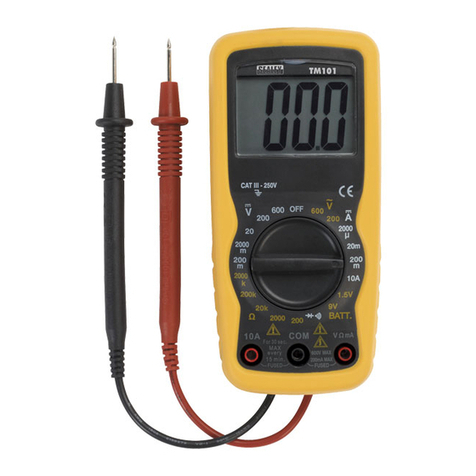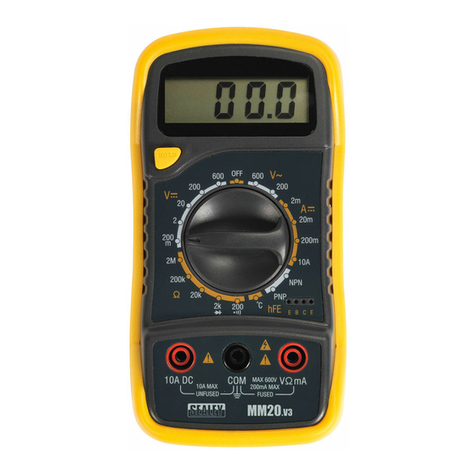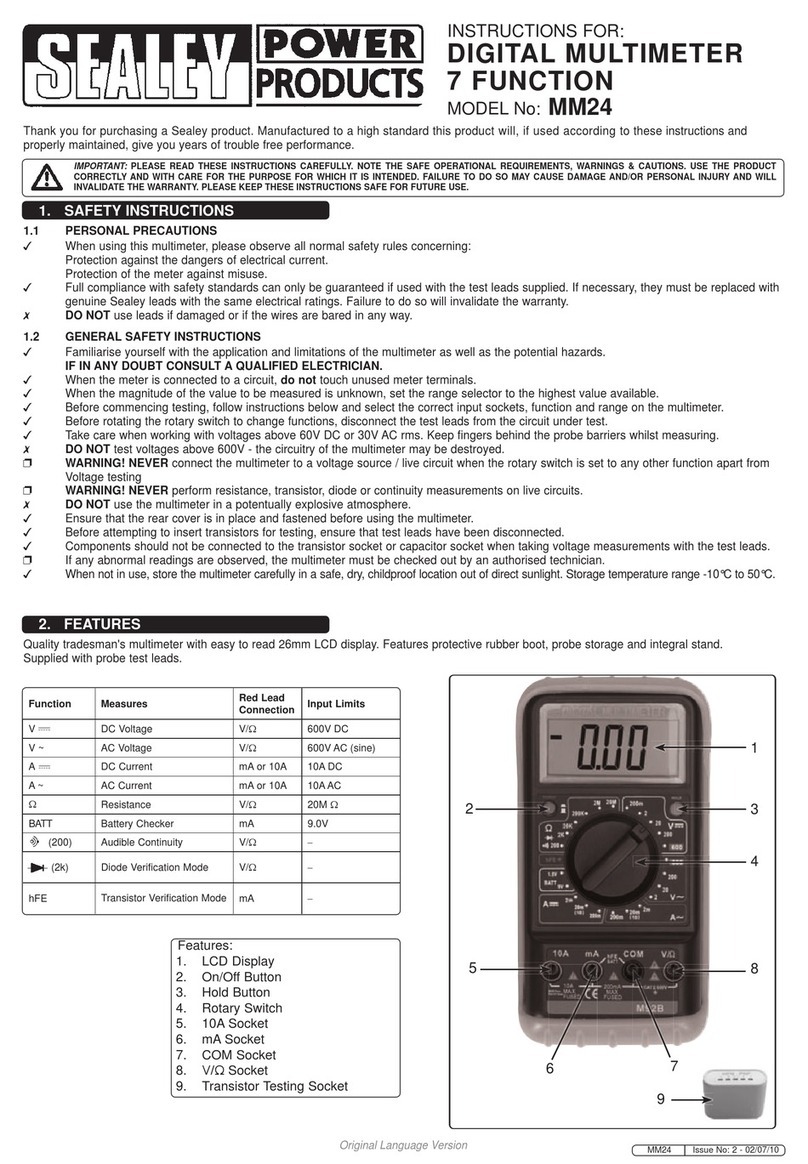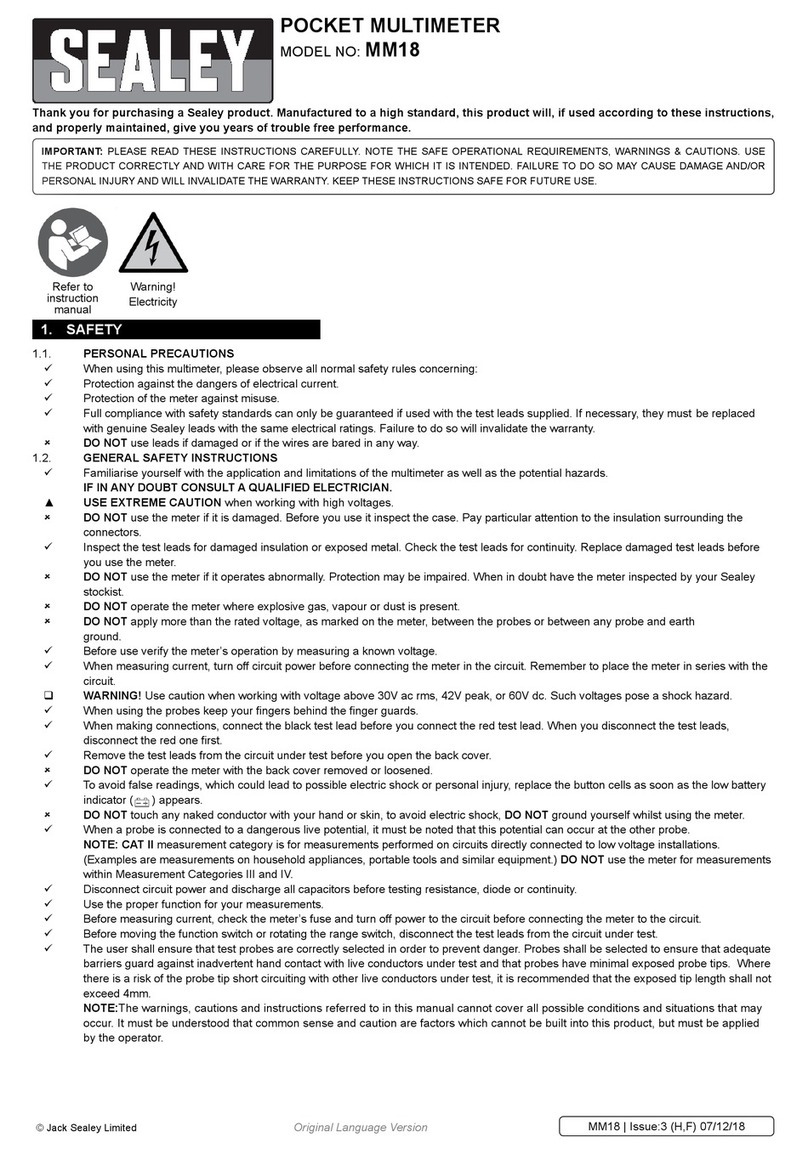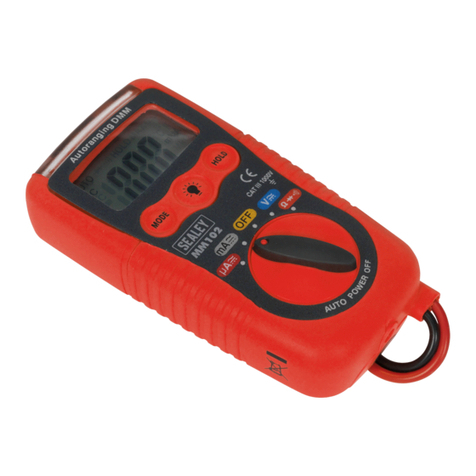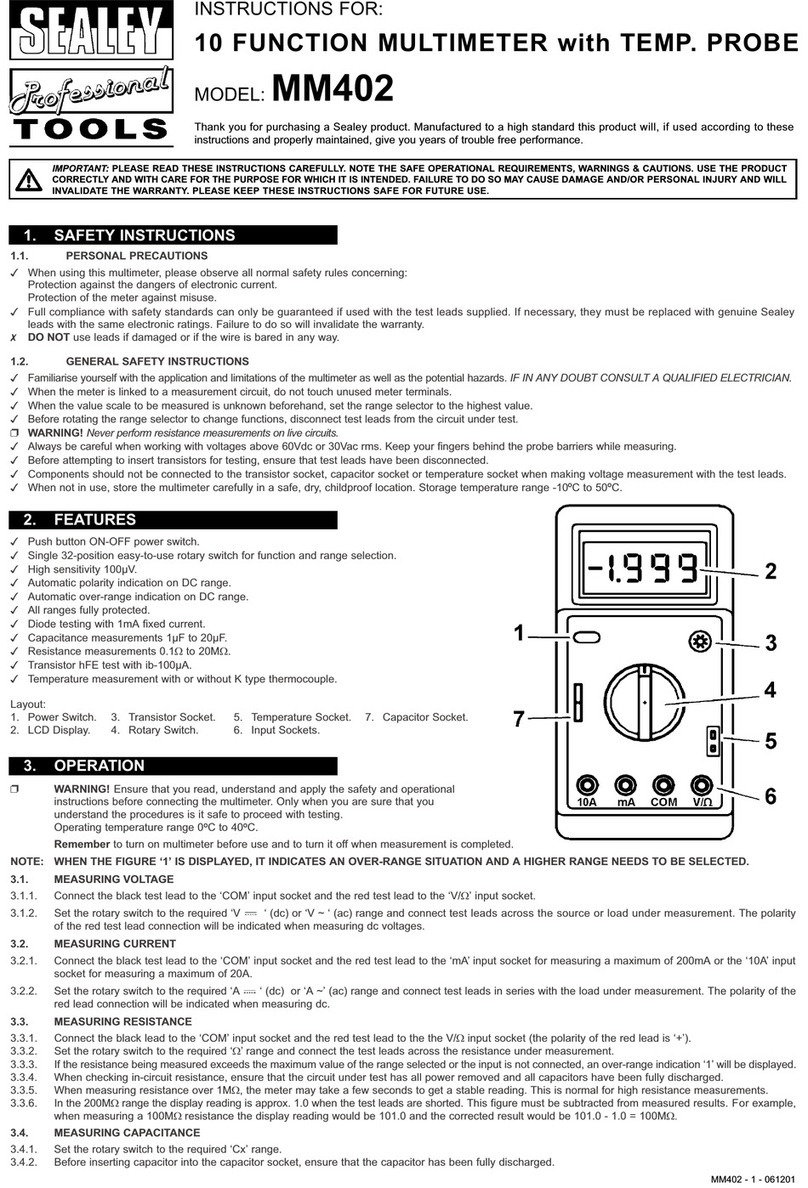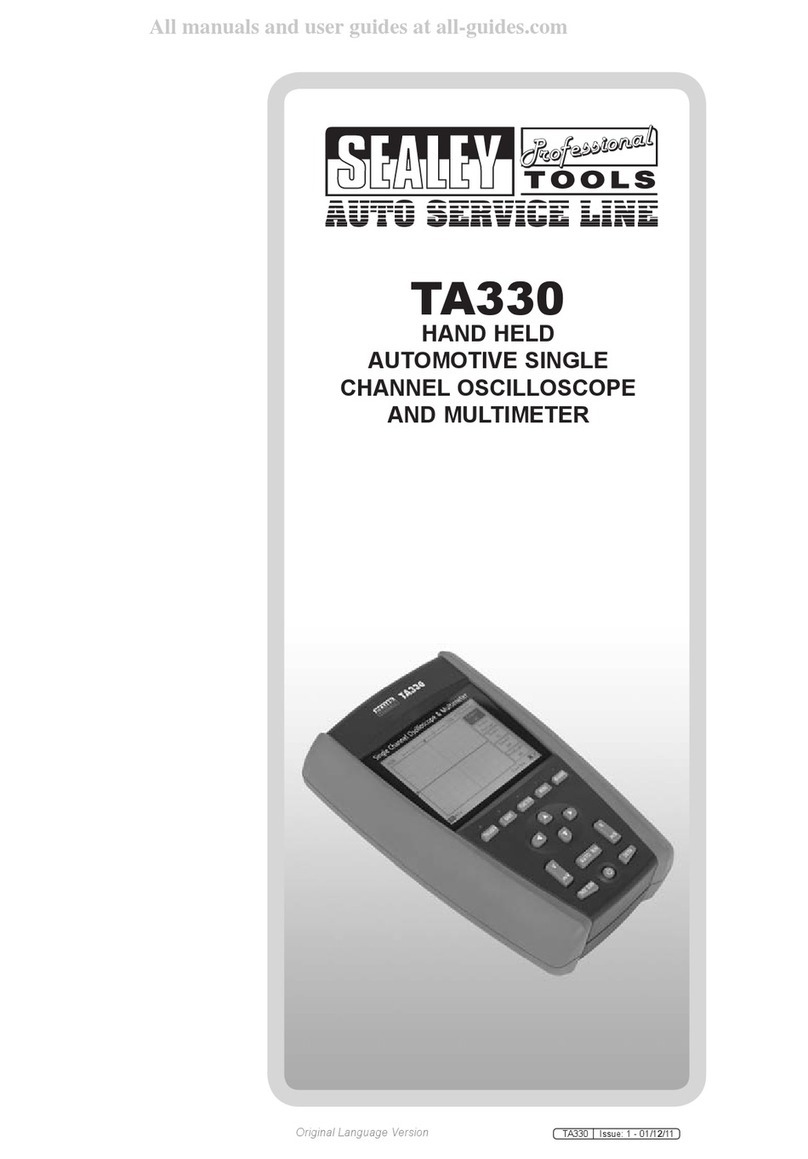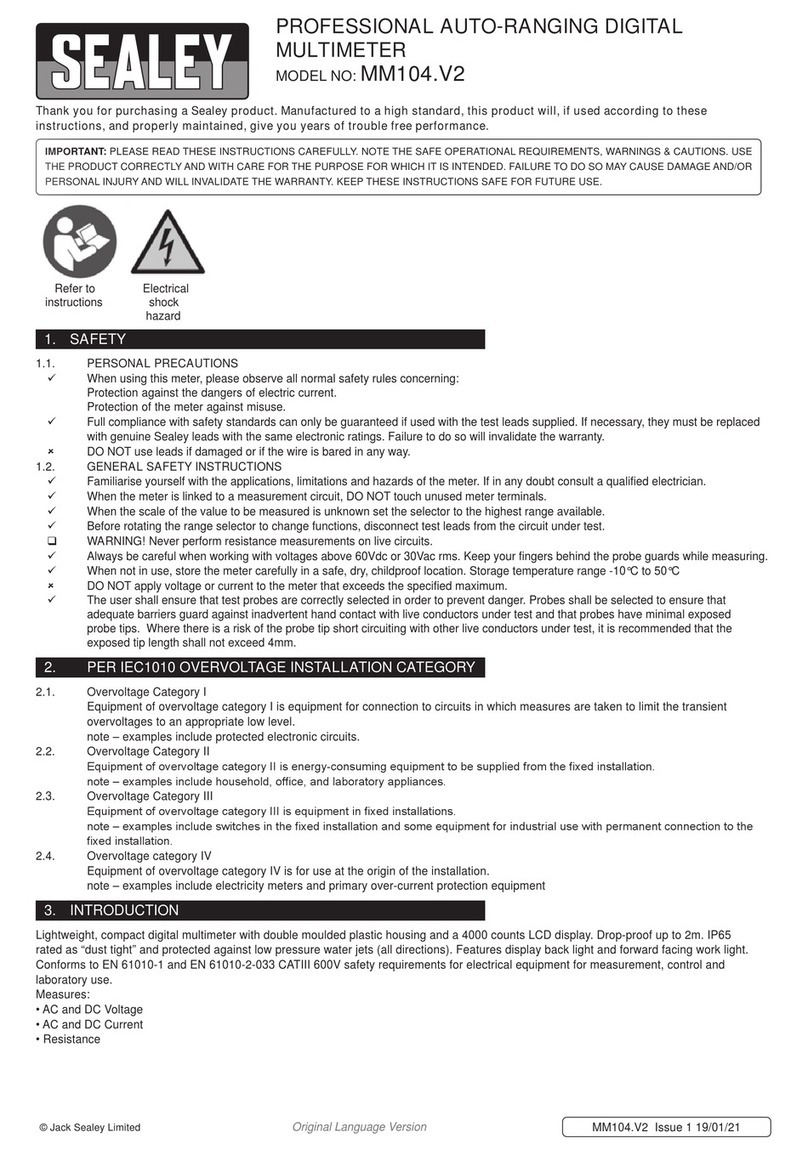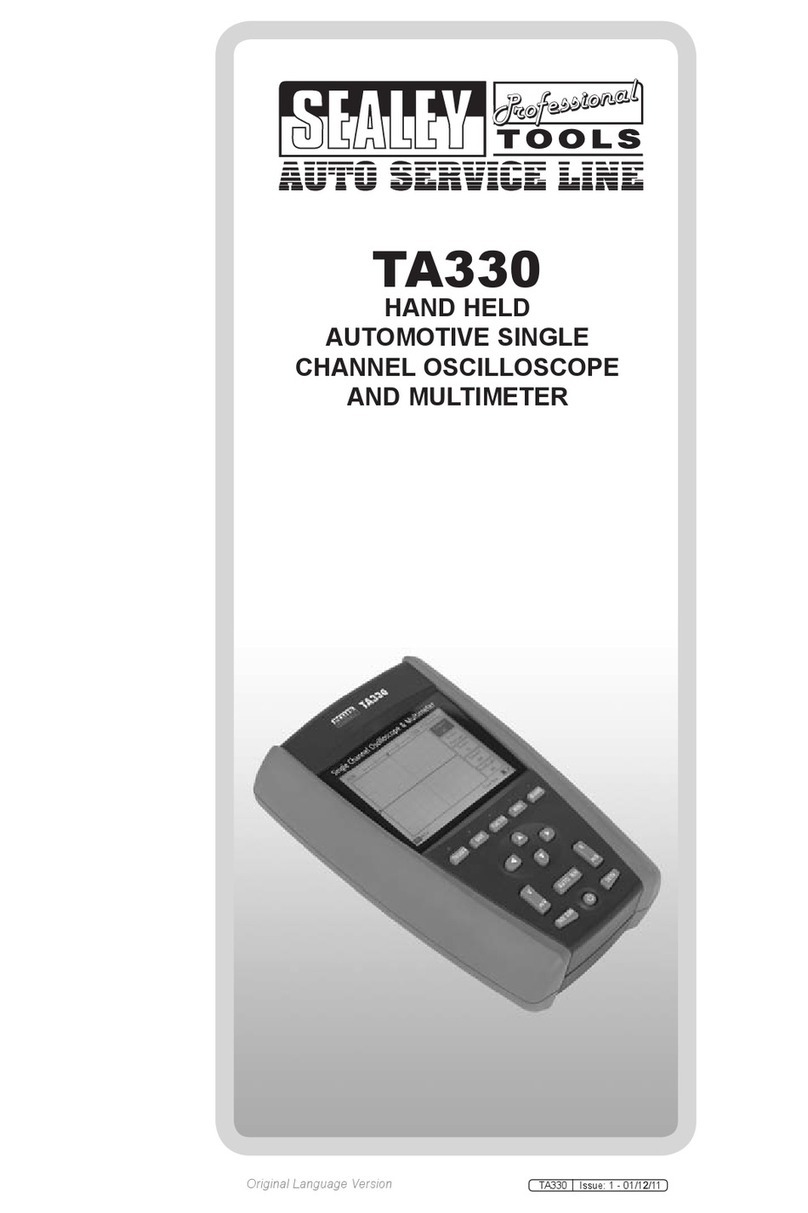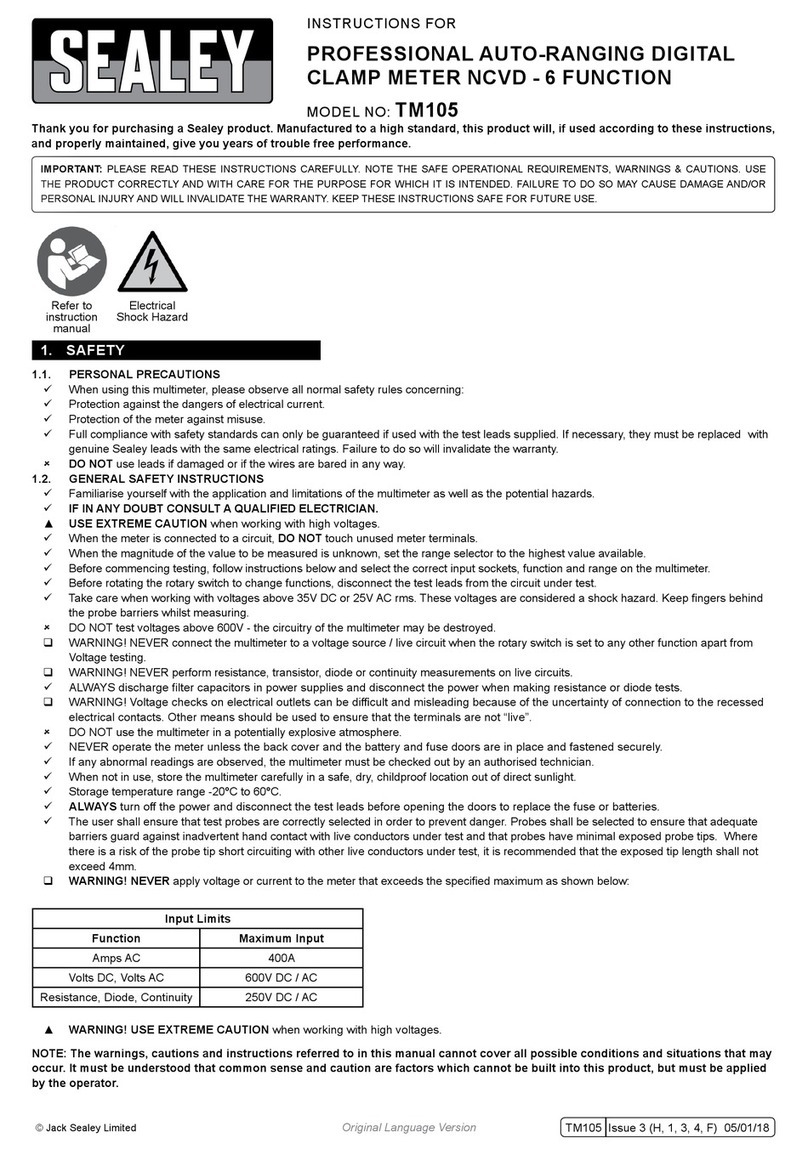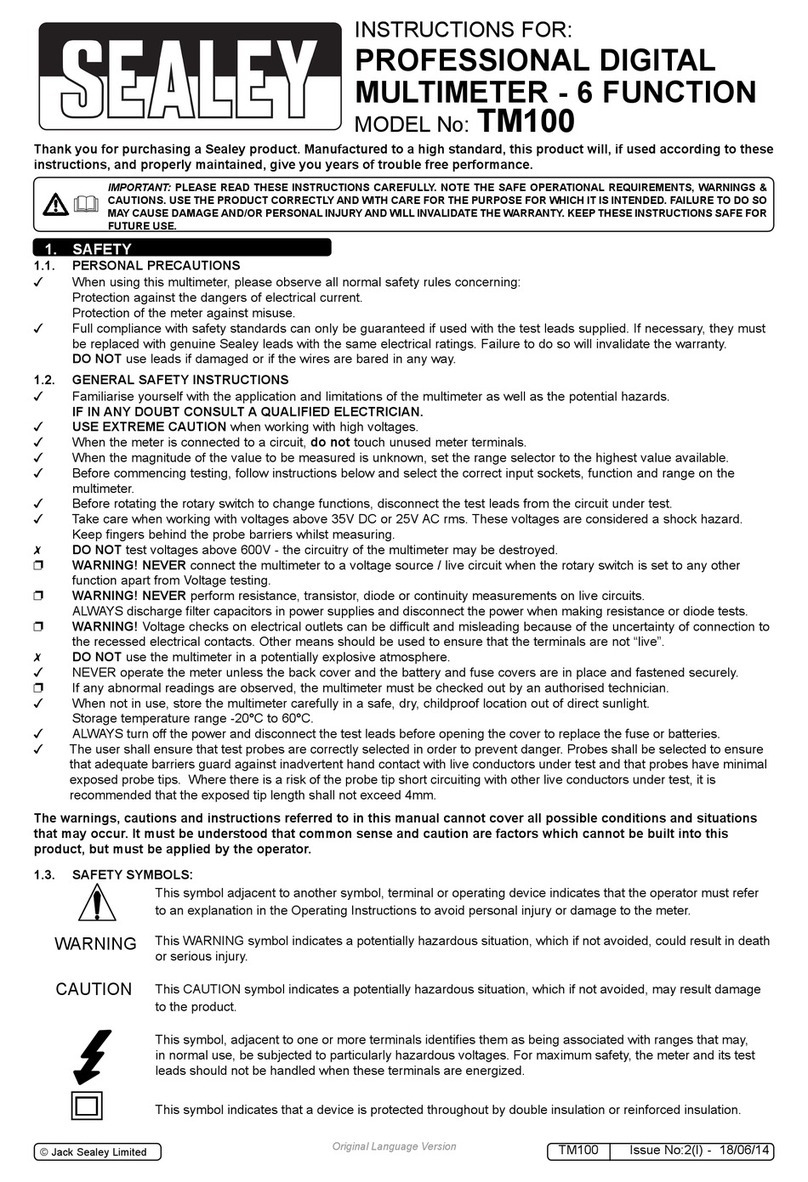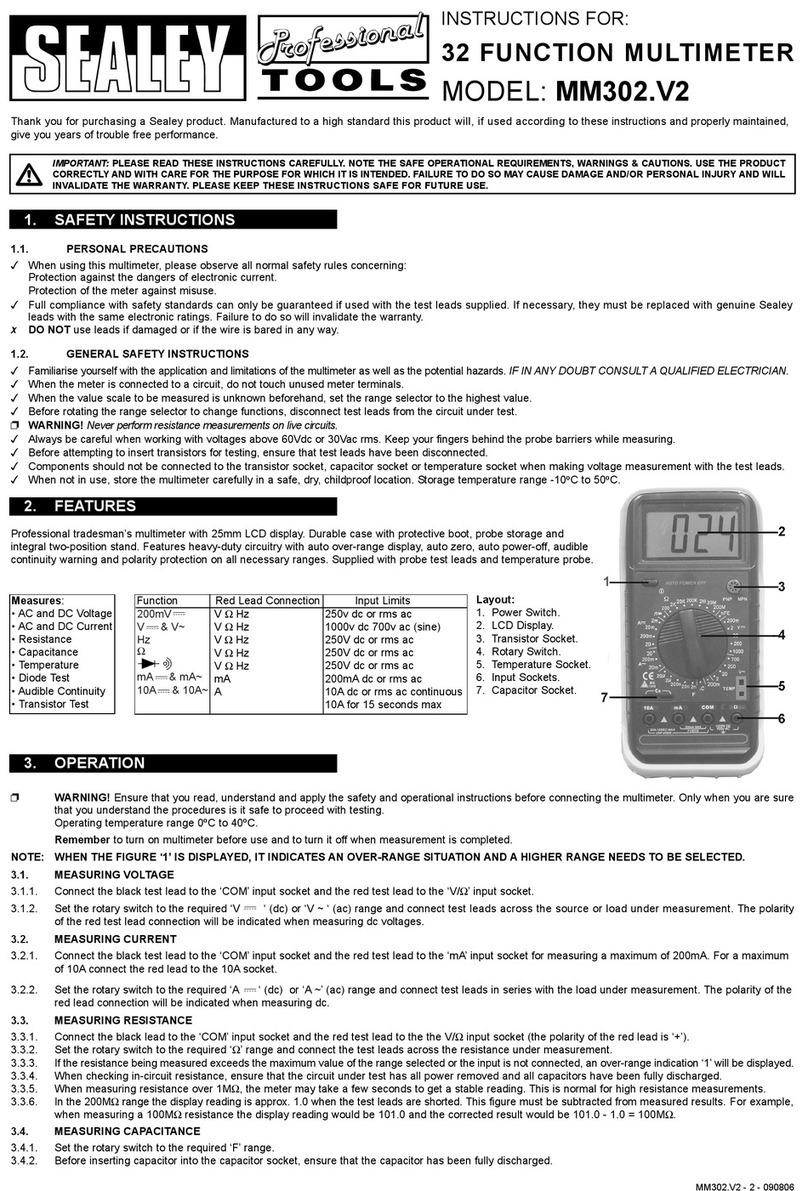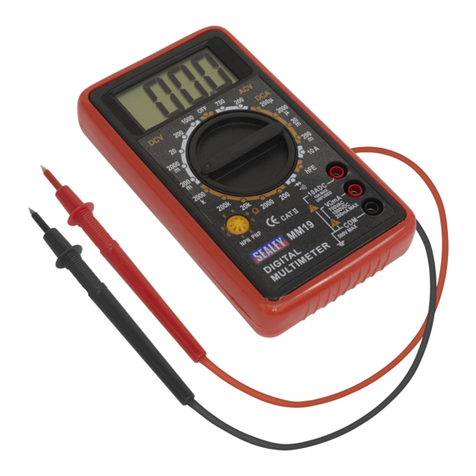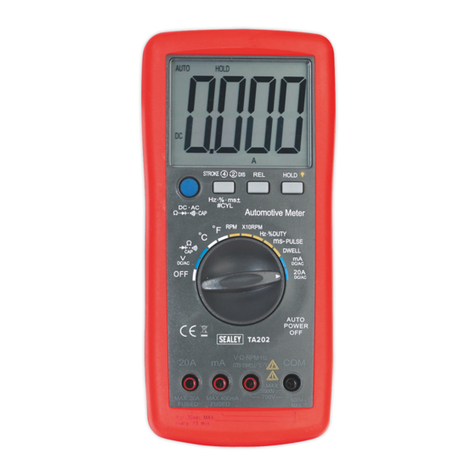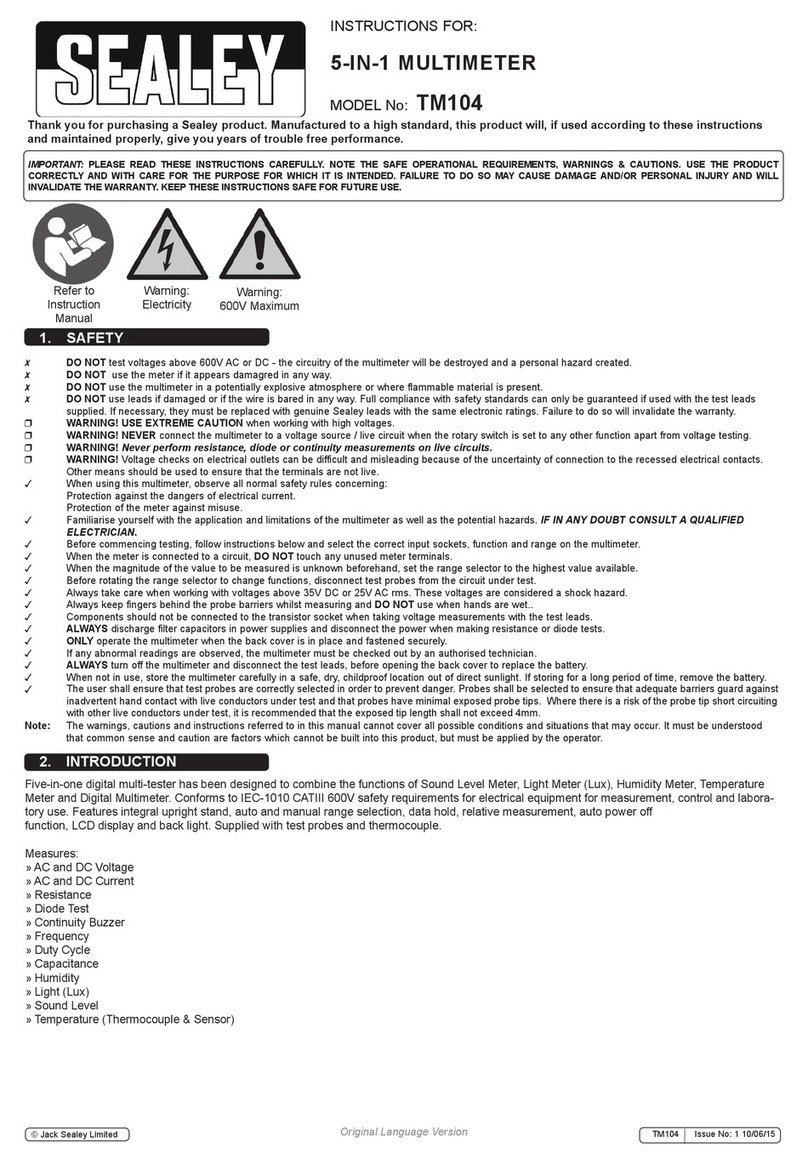
TM103 | Issue 3 07/10/16
Original Language Version
© Jack Sealey Limited
4.5. DC VOLTAGE MEASUREMENTS
CAUTION: Do not measure DC voltages if a motor on the circuit is being switched ON or OFF. Large voltage surges may occur that can
damage the meter.
4.5.1. Set the function switch to the V AC / DC position, press the Mode button to select DC.
4.5.2. Insert the black test lead banana plug into the negative (COM) jack. Insert the red test lead banana plug into the positive (V) jack.
4.5.3. Touch the black test probe tip to the negative side of the circuit. Touch the red test probe tip to the positive side of the circuit.
4.5.4. Read the voltage in the display. AutoRanging will select the correct range, or manually select the desired range (see 4.2) to obtain a
higher resolution reading. The display will indicate the proper decimal point and value. If the polarity is reversed, the display will show (-)
minus before the value.
4.6. AC VOLTAGE MEASUREMENTS
WARNING! Risk of Electrocution. The probe tips may not be long enough to contact the live parts inside some 240V outlets for
appliances because the contacts are recessed deep in the outlets.
As a result, the reading may show 0 volts when the outlet actually has voltage on it.
Make sure the probe tips are touching the metal contacts inside the outlet before assuming that no voltage is present.
CAUTION: Do not measure AC voltages if a motor on the circuit is being switched ON or OFF.
Large voltage surges may occur that can damage the meter.
4.6.1. Set the function switch to the V AC / DC position. press the Mode button to select AC.
4.6.2. Insert the black test lead banana plug into the negative (COM) jack. Insert red test lead banana plug into the positive (V) jack.
4.6.3. Touch the black test probe tip to the negative side of the circuit. Touch the red test probe tip to the positive side of the circuit.
4.6.4. Read the voltage in the display. AutoRanging will select the correct range, or manually select the desired range (see 4.2) to obtain a
higher resolution reading. The display will indicate the proper decimal point and value. If the polarity is reversed, the display will show (-)
minus before the value.
4.7. DC CURRENT MEASUREMENTS
CAUTION: Do not make current measurements on the 10A scale for longer than 30 seconds.
Exceeding 30 seconds may cause damage to the meter and/or the test leads.
4.7.1. Insert the black test lead banana plug into the negative (COM) jack.
4.7.2. For current measurements up to 4000µA DC, set the function switch to the µA range and insert the red test lead banana plug into the (µA)
jack.
4.7.3. For current measurements up to 400mA DC, set the function switch to the mA range and insert the red test lead banana plug into the
(mA) jack.
4.7.4. For current measurements up to 10A DC, set the function switch to the 10A range and insert the red test lead banana plug into the
(10A) jack.
4.7.5. Press the Mode button until DC shows in the display.
4.7.6. Remove power from the circuit under test, then open up the circuit at the point where you wish to measure current.
4.7.7. Connect test leads in series with the circuit under measurement.
4.7.8. Apply power to the circuit.
4.7.9. Read the current in the display. For mA DC measurements, reset the function switch to successively lower mA DC positions to obtain a
higher resolution reading. The display will indicate the proper decimal point and value.
4.8. AC CURRENT MEASUREMENTS
WARNING! To avoid electric shock, do not measure AC current on any circuit whose voltage exceeds 250V AC.
CAUTION: Do not make current measurements on the 10A scale for longer than 30 seconds. Exceeding 30 seconds may cause damage
to the meter and/or the test leads.
4.8.1. Insert the black test lead banana plug into the negative (COM) jack.
4.8.2. For current measurements up to 4000µA AC, set the function switch to the µA range and insert the red test lead banana plug into the
(µA) jack.
4.8.3. For current measurements up to 400mA AC, set the function switch to the mA range and insert the red test lead banana plug into the
(mA) jack.
4.8.4. For current measurements up to 10A AC, set the function switch to the 10A range and insert the red test lead banana plug into the
(10A) jack.
4.8.5. Press the Mode button until AC shows in the display.
4.8.6. Remove power from the circuit under test, then open up the circuit at the point where you wish to measure current.
4.8.7. Connect test leads in series with the circuit under measurement.
4.8.8. Apply power to the circuit.
4.8.9. Read the current in the display. For mA DC measurements, reset the function switch to successively lower mA DC positions to obtain a
higher resolution reading. The display will indicate the proper decimal point and value.
4.9. RESISTANCE MEASUREMENTS
WARNING! To avoid electric shock, disconnect power to the unit under test and discharge all capacitors before taking any resistance
measurements. Remove the batteries and unplug the line cords.
4.9.1. SetthefunctionswitchtotheΩposition.
4.9.2. Inserttheblacktestleadbananaplugintothenegative(COM)jack.InserttheredtestleadbananaplugintothepositiveΩjack.
4.9.3. Touch the test probe tips across the circuit or component under test. It is best to disconnect one side of the component under test so the
rest of the circuit will not interfere with the resistance reading.
4.9.4. Read the resistance in the display The display will indicate the proper decimal point and value.
4.10. CONTINUITY CHECK
WARNING! To avoid electric shock, never measure continuity on circuits or wires that have voltage on them.
4.10.1. Setthefunctionswitchtothe/•)))position.
4.10.2. Inserttheblackleadbananaplugintothenegative(COM)jack.Inserttheredtestleadbananaplugintothepositive(Ω)jack.
4.10.3. PresstheModebuttonuntilthe•)))symbolappearsinthedisplay.
4.10.4. Touch the test probe tips to the circuit or wire you wish to check.
4.10.5. Touch the test probe tips to the circuit or wire you wish to check.
